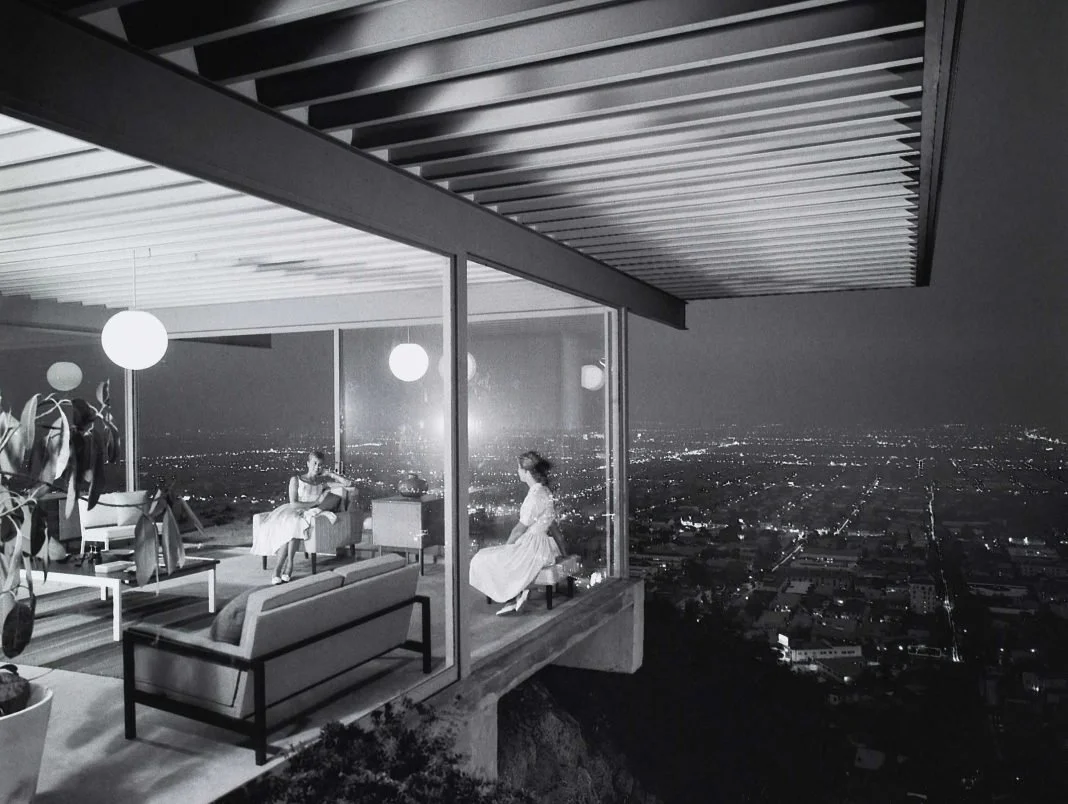Six Things You Should Know About Frank Lloyd Wright
Occasionally there is an architect that emerges and profoundly impacts the profession. Their work defines a turning point in the history of architecture, sustains long-term relevancy, and influences generations of architects far into the future. For me, two architects in the modern era accomplished this. They are Le Corbusier and Frank Lloyd Wright. Wright’s work broke the aesthetic pattern of his time and created a genuinely new architectural paradigm. The number of disciples that worked with or under Wright and later moved on to have significant contributions to the field is staggering. Renowned mid-century architects such as Richard Neutra, Rudolph Schindler, John Lautner, Raphael Soriano, and Gregory Ain all have ties back to Wright.
1. Wright’s Early Years and Training
In Wright’s childhood, his mother told him he would become an architect. Wright began studying engineering in 1885 at the University of Wisconsin, but before finishing his degree, he moved to Chicago and began work under a local home designer. In 1888 he switched jobs to work under Louis Sullivan. Sullivan, who was working on the design of skyscrapers, had unique and radical views about architecture for the time. After five years of work under Sullivan, Wright would open his own office.
He built his own home studio at his Oak Park home just outside of Chicago. This small office would become one of the primary centers for disseminating the ideas and philosophies of modern architecture. At this studio, he would begin to develop an architectural identity for America called the Prairie Style.
Photo: Frank Lloyd Wright Trust
2. The Prairie Style
Over the next fifteen years, Wright would secure over one hundred commissions. Although Wright’s talent, salesmanship, and charisma are widely acknowledged, some have credited his success to impeccable timing and luck. Around this time, the middle class was growing, and an influx of money sparked economic growth. The demand for new single-family homes was high, and commissions were plenty.
In the early 1900’s Wright became heavily influenced by Japanese architecture and culture. He was exposed to books and prints showcasing Japanese buildings and, in 1905, took a trip to the country. The Prairie Style began formulating its unique identity when Japanese aesthetics were integrated into the designs.
From 1901 to 1910, while at the Oak Park Studio, Wright went through a creative chapter in his career where he would design some of his most famous works, including the Martin House, Coonley House, Robie House, the Larkin Building, and Unity Temple.
The houses designed during this time would become the icons of his Prairie Style. This style would become identifiable by its large overhanging eaves, strong horizontal lines, and stealthy profiles that hovered over the surrounding landscapes. At the center of these houses often stood a bold fireplace that anchored the cantilevered floating planes jutting out into the landscape. From the exterior, the architecture was dynamic and appeared to be in movement. The long horizontal planes overlapped and hovered over the recessed glass facades creating a strong shadow under the eave and accentuating the floating appearance of the roof. The floor plans were asymmetrical yet balanced, contributing to the architecture's dynamic nature.
Details in the masonry patterns, window mullions, screens, and stained glass patterns referenced the same formal system as the large-scale pieces. This made the entire composition feel like it had inherent and cohesive intelligence.
3. Wright’s Studio in Taliesin
In 1909 Wright separated from his wife and fled to Europe for several months with Mamah Borthwick Cheney. When they returned to the United States, the couple retreated to the Wisconsin countryside and began building a large estate known as Taliesin. Taliesin would become their primary residence and Wrights’s architectural studio. In 1914 his family and wife were murdered by a staff member at Taliesin, and the structure was burnt to the ground. Wright was devastated, and his career was at a halt.
Taliesin
Photo: Getty Images/Dennis K. Johnson
4. The Textile Block Houses and Los Angeles
After a period of mourning and emotional turmoil, Wright was granted two new commissions; the Imperial Hotel in Tokyo and the Barnsdall complex in Los Angeles. With these two commissions, Wright began exploring forms reminiscent of architecture from pre-Columbian Mexico. His interest in this type of architecture was sparked in 1915 after he visited the Panama-California Exposition in San Diego.
Wright’s commissions in Los Angeles started with the daughter of a wealthy oil tycoon. Her name was Aline Barnsdall. Barnsdall would commission Wright to design a large theater complex on a plot of land in Hollywood called “Olive Hill.” Ultimately only a portion of the master plan would be built, which included the Hollyhock House, Directors House, and Studio B Residence. During the construction of the house, Lloyd Wright (Frank Lloyd Wright’s son) and Rudolph Schindler supervised construction.
Hollyhock House
Photo: Joshua White
The design of the Hollyhock house, which is still open today for tours, would be a synthesis of Mayan and Viennese aesthetics, and the interior design would borrow from Hollywood’s movie sets. Over the next few years, Barnsdall would commission more work from Wright. Although most of these would never be built, his relationship with Barnsdall positioned him at the center of a prestigious social circle. It would lead to future commissions with other clients.
During this time, Wright would design the Ennis, Millard, Storer, and Freeman houses, all of which pulled references from the pre-Columbian architecture of Mexico. These houses would become known as the textile block houses. In the decade between the completion of the Ennis house and 1935, Wright would hit a dry spell for commissions.
Ennis House
Photo: Frank Lloyd Wright Trust
5. Taliesin West and Fallingwater
In the 1930’s Wright’s career would regain momentum. 1932 Wright would establish the Taliesin fellowship. The fellowship was an architecture school for young men that would teach Wrights’s architectural philosophy. The young men would help farm and maintain the estate in exchange for tuition, schooling, and the opportunity to work under Wright. The school would produce some of Wright's most famous mid-century modern architects and disciples. After establishing his fellowship program, Wright would earn commissions such as the Johnson Wax Factory in Racine, Wisconsin, and most notably, his masterpiece Fallingwater.
Edgar J. Kaufmann commissioned Fallingwater in 1934 as a retreat in Bear Run, Pennsylvania. The site was heavily wooded with a stream and a small waterfall. Wright would site the house on a rock outcropping above the falls and cantilever the structure over the creek. Fallingwater infused elements of all of his architectural languages up to that point. There are noticeable elements of the Prairie House style with its long horizontals and integration into the landscape. The project also has strong vertical masonry masses nodding to his textile block houses on the west coast. The stream's proximity to the structure and the way the house seems to come out of the hillside make the architecture appear to emerge from the landscape.
Fallingwater
Photo: Getty Images/Walter Bibikow
6. Later Works
The projects after Fallingwater are often classified as Wright’s later works. In 1934 he began working on the Broadacre City Model, a theoretical urban planning proposal for lower-density housing. In 1936 his design for the Johnson Wax Administration Center started construction. Later in the 1930s, he worked on middle-income homes known as the Usonian Houses. The Usonian houses were Wright’s response to the Great Depression and the demand for inexpensive housing for those affected by the economic downturn. These are often considered the beginning of modern ranch houses.
In the mid-1930s, Wright began planning to build Taliesin West in Scottsdale, Arizona. Taliesin West was to be the winter residence for the fellowship. The school would migrate between the two structures in Wisconsin and Arizona. In 1943, Wright started a project that would last until the end of his life. He received the commission for the Guggenheim Museum of Modern and Contemporary Art in New York City. In April 1959, Wright became severely ill and passed away just before his ninety-second birthday.
Guggenheim Museum of Modern and Contemporary Art
Photo: David Heald
Wright transformed the history of the architecture profession through his buildings, theories, conceptual projects, and writings. He has been recorded as one of the most influential architects in modern history. To this day, his buildings are studied in architectural firms and universities all over the world. His work continues to influence the shape of our built environment.
Please let us know if you notice any errors or inaccuracies in the information presented. We strive to provide you with the most historically accurate material possible.
Photo: Tony Vaccaro/Hulton Archive/Getty Images
References
Architecture of the sun: Los Angeles modernism, 1900-1970 Thomas Hines - Rizzoli – 2010
Modern architecture since 1900 William Curtis - Phaidon - 2013



















